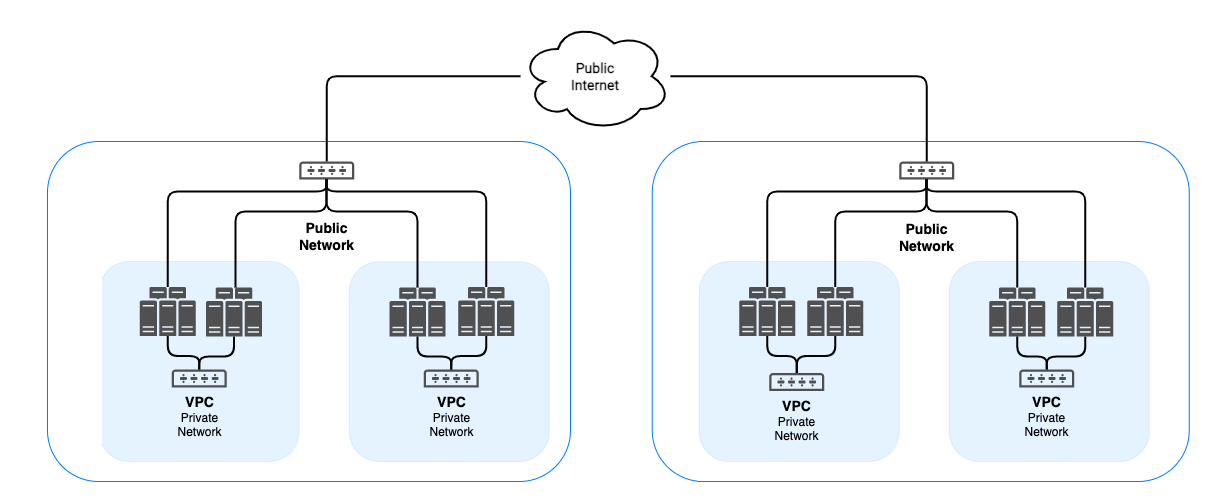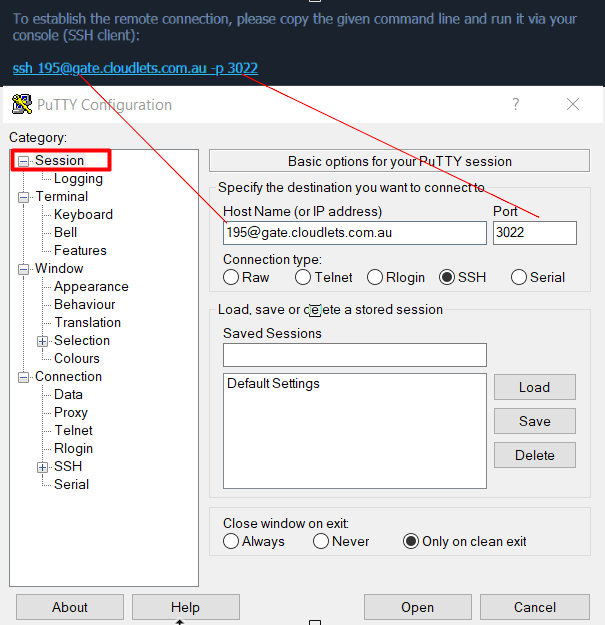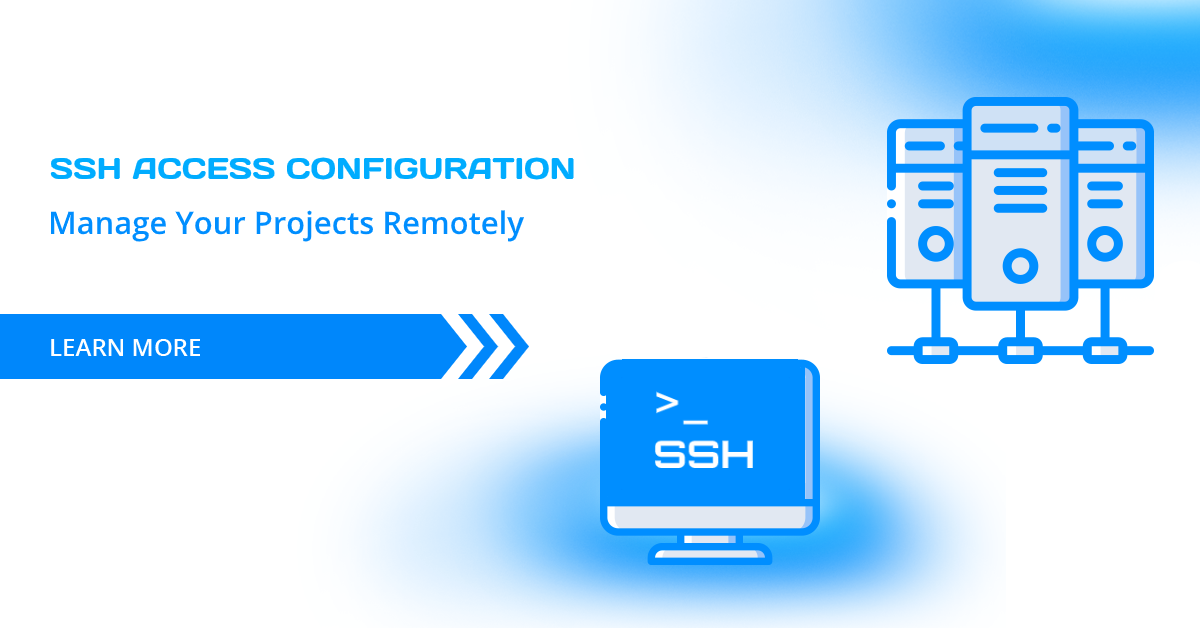How to Securely Connect to Remote IoT Devices Using P2P SSH
With the increasing number of IoT devices being deployed, it is more important than ever to ensure that these devices are securely connected. One way to do this is to use SSH (Secure Shell) to create a secure tunnel between the remote device and a local computer.
SSH is a protocol that allows for secure remote login and command execution over an encrypted connection. This makes it an ideal solution for securely connecting to IoT devices, as it provides a way to access the device's command line interface without having to expose it to the public internet.
Read also:A Deep Dive Into The Life And Legacy Of Cheryl Crane And Her Wife
There are a number of different ways to set up SSH on IoT devices. One common method is to use a P2P (peer-to-peer) connection. This type of connection does not require a third-party server, making it more secure and reliable.
To set up a P2P SSH connection, you will need to generate a public/private key pair on the remote device. The public key will be used to authenticate the device to the local computer, while the private key will be used to decrypt the encrypted SSH traffic.
Once you have generated the key pair, you can use an SSH client on the local computer to connect to the remote device. The SSH client will use the public key to authenticate the device, and the private key to decrypt the encrypted traffic.
Using SSH to securely connect to remote IoT devices is a relatively simple process. However, it is important to follow the steps carefully to ensure that the connection is secure.
Securely Connect Remote IoT P2P SSH Download
To securely connect remote IoT devices using P2P SSH download, several key aspects must be considered:
- Authentication: Verify the identity of the remote device using SSH keys.
- Encryption: Protect data transmitted between devices with strong encryption algorithms.
- Confidentiality: Ensure that only authorized users can access sensitive data.
- Integrity: Protect data from unauthorized modification or corruption.
- Availability: Maintain uninterrupted access to remote devices for critical operations.
- Remote Management: Enable secure remote access for device configuration, updates, and troubleshooting.
- Network Security: Implement network security measures, such as firewalls and intrusion detection systems, to protect the connection.
- Compliance: Adhere to industry regulations and standards for data security and privacy.
These aspects are interconnected and essential for establishing a secure P2P SSH connection for remote IoT device management. By implementing these measures, organizations can safeguard their IoT infrastructure, protect sensitive data, and ensure the reliable operation of their remote devices.
Read also:Unveiling The Life And Legacy Of Dot Marie Jones Televisions Trailblazing Icon
1. Authentication
In the context of securely connecting remote IoT devices using P2P SSH download, authentication plays a critical role in ensuring the identity of the remote device. SSH keys provide a robust mechanism for verifying the authenticity of the device, preventing unauthorized access and potential security breaches.
- Facet 1: Key Generation and Exchange
SSH keys are generated in pairs, consisting of a public key and a private key. The public key is shared with the remote device, while the private key remains securely stored on the local computer. When a connection is established, the remote device presents its public key to the local computer, which verifies the authenticity of the key using the stored private key. - Facet 2: Strong Encryption
SSH keys utilize strong encryption algorithms, such as RSA or ECDSA, to protect the transmission of data between the local computer and the remote device. This encryption ensures that even if data is intercepted, it cannot be decrypted without access to the private key. - Facet 3: Prevention of Man-in-the-Middle Attacks
SSH keys help prevent man-in-the-middle attacks, where an unauthorized party attempts to intercept and manipulate the communication between the local computer and the remote device. By verifying the authenticity of the SSH keys, both parties can ensure that they are communicating directly with each other. - Facet 4: Simplified Access Management
SSH keys provide a convenient and efficient way to manage access to remote devices. Instead of relying on passwords, which can be forgotten or compromised, SSH keys offer a more secure and reliable method of authentication. This simplifies access management, especially for devices that may be located in remote or unattended locations.
In summary, authentication using SSH keys is a fundamental aspect of securely connecting remote IoT devices through P2P SSH download. It ensures the identity of the remote device, protects data transmission, prevents unauthorized access, and simplifies access management, contributing to the overall security and integrity of the IoT network.
2. Encryption
In the context of securely connecting remote IoT devices using P2P SSH download, encryption plays a critical role in safeguarding the data transmitted between devices, ensuring confidentiality and integrity.
- Facet 1: Data Protection
Encryption algorithms, such as AES-256 or ChaCha20, are employed to encrypt data during transmission, rendering it unreadable to unauthorized parties. This protection ensures that even if data is intercepted, it cannot be deciphered without the encryption key. - Facet 2: Secure Communication Channels
Encryption establishes a secure communication channel between the local computer and the remote IoT device, preventing eavesdropping and data manipulation. This secure channel ensures that data is transmitted confidentially and remains unaltered during transit. - Facet 3: Prevention of Data Breaches
Encryption serves as a vital defense against data breaches by protecting sensitive information, such as device credentials, sensor data, and control commands, from falling into the wrong hands. This protection minimizes the risk of unauthorized access and data theft. - Facet 4: Compliance with Regulations
Encryption aligns with industry regulations and standards that require the protection of sensitive data. By implementing robust encryption measures, organizations can demonstrate compliance with data protection laws and regulations, enhancing their overall security posture.
In summary, encryption is a cornerstone of securely connecting remote IoT devices using P2P SSH download. It ensures data confidentiality, integrity, and protection against unauthorized access, data breaches, and compliance violations, contributing to the overall security and reliability of IoT deployments.
3. Confidentiality
Confidentiality is a critical aspect of securely connecting remote IoT devices using P2P SSH download. It ensures that only authorized users have access to sensitive data transmitted between devices, preventing unauthorized access and potential security breaches.
In the context of IoT, sensitive data may include device credentials, sensor data, control commands, and other information that could be exploited by unauthorized parties. Ensuring confidentiality is crucial for maintaining the integrity and security of IoT devices and the data they handle.
P2P SSH download relies on strong encryption algorithms to protect data during transmission. By encrypting data, only authorized users with the appropriate decryption keys can access the information. This encryption prevents eavesdropping and data interception, ensuring that sensitive data remains confidential.
Maintaining confidentiality is not only important for protecting sensitive data but also for complying with industry regulations and standards. Many regulations require organizations to implement measures to protect sensitive data, and encryption is a widely recognized and accepted method for achieving confidentiality.
In summary, confidentiality is a fundamental component of securely connecting remote IoT devices using P2P SSH download. It ensures that sensitive data is protected from unauthorized access, maintains the integrity of IoT devices and data, and aligns with industry regulations and standards.
4. Integrity
In the context of securely connecting remote IoT devices using P2P SSH download, integrity plays a crucial role in ensuring that data remains unaltered and uncorrupted during transmission, preventing unauthorized modifications and maintaining data reliability.
- Facet 1: Data Consistency
Integrity ensures that data transmitted between the local computer and the remote IoT device remains consistent and unaltered. This consistency is critical for maintaining the accuracy and reliability of data, especially for control commands and sensor readings, which are essential for the proper functioning of IoT devices.
- Facet 2: Prevention of Data Tampering
Integrity measures protect data from unauthorized tampering or manipulation. By verifying the integrity of data, both the local computer and the remote IoT device can ensure that the data has not been modified or corrupted during transmission, preventing malicious actors from disrupting or compromising the system.
- Facet 3: Error Detection and Correction
Integrity mechanisms often include error detection and correction capabilities. These mechanisms can detect and correct errors that may occur during data transmission, ensuring that the data received is accurate and reliable. This is particularly important for IoT devices operating in harsh or noisy environments where data transmission is prone to errors.
- Facet 4: Compliance with Regulations
Maintaining data integrity aligns with industry regulations and standards that require organizations to protect the accuracy and reliability of data. By implementing robust integrity measures, organizations can demonstrate compliance with data protection laws and regulations, enhancing their overall security posture.
In summary, integrity is a fundamental aspect of securely connecting remote IoT devices using P2P SSH download. It ensures that data remains consistent, unaltered, and protected from unauthorized tampering, error, and corruption. Maintaining data integrity is essential for the proper functioning of IoT devices, compliance with regulations, and the overall security and reliability of IoT deployments.
5. Availability
In the context of securely connecting remote IoT devices using P2P SSH download, availability plays a crucial role in ensuring that critical operations can be performed without interruption, maximizing productivity and minimizing downtime.
- Facet 1: Remote Troubleshooting and Maintenance
Availability enables remote troubleshooting and maintenance of IoT devices, regardless of their physical location. This is particularly important for devices deployed in remote or hard-to-reach areas, allowing technicians to diagnose and resolve issues remotely, minimizing downtime and ensuring continuous operation.
- Facet 2: Real-Time Monitoring and Control
Continuous availability allows for real-time monitoring and control of IoT devices. This is essential for applications such as industrial automation, where uninterrupted access to devices is critical for maintaining operational efficiency and minimizing production losses.
- Facet 3: Emergency Response and Recovery
In emergency situations, availability is crucial for enabling rapid response and recovery. Remote access to IoT devices allows technicians to quickly assess the situation, diagnose problems, and implement recovery measures, minimizing the impact of disruptions and ensuring business continuity.
- Facet 4: Scalability and Redundancy
Availability can be enhanced through scalability and redundancy measures. By deploying multiple redundant P2P SSH connections, organizations can ensure that access to remote IoT devices is maintained even in the event of failures or outages, maximizing uptime and reliability.
In summary, availability is a key aspect of securely connecting remote IoT devices using P2P SSH download. It enables uninterrupted access to devices for critical operations, remote troubleshooting and maintenance, real-time monitoring and control, emergency response and recovery, and scalability and redundancy. By ensuring availability, organizations can maximize the value of their IoT deployments, minimize downtime, and enhance operational efficiency.
6. Remote Management
Remote management plays a critical role in securely connecting remote IoT devices using P2P SSH download. It provides secure remote access to devices for configuration, updates, and troubleshooting, ensuring the smooth operation and maintenance of IoT deployments.
Configuration and updates are essential for maintaining the functionality and security of IoT devices. Remote management allows technicians to remotely configure devices, apply security patches, and update firmware. This is particularly important for devices deployed in remote or hard-to-reach locations, eliminating the need for on-site visits and minimizing downtime.
Troubleshooting is another key aspect of remote management. IoT devices can encounter various issues, and remote access enables technicians to diagnose and resolve problems remotely. This reduces the time and effort required for troubleshooting, minimizing disruptions to operations and ensuring the continuous availability of IoT devices.
In summary, remote management is a crucial component of securely connecting remote IoT devices using P2P SSH download. It enables secure remote access for device configuration, updates, and troubleshooting, maximizing uptime, minimizing downtime, and ensuring the efficient operation of IoT deployments.
7. Network Security
Network security measures, such as firewalls and intrusion detection systems, play a critical role in securely connecting remote IoT devices using P2P SSH download. These measures protect the connection between the local computer and the remote IoT device from unauthorized access, malicious attacks, and other security threats.
Firewalls act as barriers between the local network and the internet, blocking unauthorized traffic and preventing malicious actors from gaining access to the IoT devices. Intrusion detection systems monitor network traffic for suspicious activities and can alert administrators to potential threats. These measures help to protect the confidentiality, integrity, and availability of data transmitted between the local computer and the remote IoT device.
In summary, implementing network security measures is an essential component of securely connecting remote IoT devices using P2P SSH download. These measures protect the connection from unauthorized access, malicious attacks, and other security threats, ensuring the security and integrity of the data transmitted between the local computer and the remote IoT device.
8. Compliance
Compliance with industry regulations and standards for data security and privacy plays a crucial role in securely connecting remote IoT devices using P2P SSH download. These regulations and standards provide a framework for organizations to protect sensitive data, maintain data integrity, and ensure the privacy of individuals.
- Facet 1: Data Protection Regulations
Regulations such as the General Data Protection Regulation (GDPR) and the California Consumer Privacy Act (CCPA) impose strict requirements on organizations that collect, process, and store personal data. By adhering to these regulations, organizations can demonstrate their commitment to data protection and avoid potential legal liabilities.
- Facet 2: Industry Standards
Industry standards, such as ISO 27001 and NIST Cybersecurity Framework, provide best practices for implementing robust security measures. Compliance with these standards helps organizations establish a comprehensive security program that protects their IoT devices and data from unauthorized access, data breaches, and other security threats.
- Facet 3: Privacy by Design
Privacy by design is a proactive approach to data protection that involves considering privacy implications at every stage of the system design and development process. By implementing privacy-enhancing technologies and adhering to privacy principles, organizations can minimize the collection and storage of personal data, reducing the risk of data breaches and unauthorized access.
- Facet 4: Regular Audits and Reviews
Regular audits and reviews are essential for ensuring ongoing compliance with regulations and standards. These audits help organizations identify areas for improvement, address any security gaps, and maintain a high level of data protection. By conducting regular audits and reviews, organizations can proactively mitigate risks and demonstrate their commitment to data security and privacy.
In summary, compliance with industry regulations and standards for data security and privacy is a critical aspect of securely connecting remote IoT devices using P2P SSH download. By adhering to these regulations and standards, organizations can protect sensitive data, maintain data integrity, ensure the privacy of individuals, and demonstrate their commitment to responsible data handling.
FAQs on Securely Connecting Remote IoT P2P SSH Download
This section addresses frequently asked questions (FAQs) about securely connecting remote IoT devices using P2P SSH download. The FAQs aim to provide clear and informative answers to common concerns and misconceptions surrounding this topic.
Question 1: What is the significance of SSH in securing IoT device connections?
SSH (Secure Shell) is a critical protocol for securely connecting to remote devices over an encrypted channel. It provides strong authentication, data encryption, and protection against unauthorized access, making it an ideal solution for securing IoT device connections.
Question 2: How does P2P SSH differ from traditional SSH connections?
Traditional SSH connections require a third-party server to establish a secure tunnel between the local computer and the remote device. P2P SSH, on the other hand, eliminates the need for a server, allowing devices to connect directly to each other, enhancing security and reducing the risk of eavesdropping.
Question 3: What are the key benefits of using P2P SSH for IoT device connections?
P2P SSH offers several advantages for IoT device connections, including increased security, reduced latency, and improved reliability. By eliminating the need for a third-party server, P2P SSH minimizes the risk of unauthorized access and data interception, while also reducing network latency and enhancing the overall stability of the connection.
Question 4: What security measures should be implemented alongside P2P SSH to ensure robust protection?
To further enhance the security of P2P SSH connections, organizations should consider implementing additional security measures, such as strong encryption algorithms, multi-factor authentication, and regular security audits. These measures work in conjunction with P2P SSH to provide a comprehensive security framework for IoT device connections.
Question 5: What industries can benefit the most from using P2P SSH for IoT device connections?
P2P SSH is particularly beneficial for industries that rely on remote IoT device management and data collection. Industries such as manufacturing, healthcare, and transportation can leverage P2P SSH to securely connect and manage their IoT devices, enabling real-time monitoring, remote troubleshooting, and efficient data transfer.
In summary, securely connecting remote IoT devices using P2P SSH download is essential for ensuring the privacy, integrity, and availability of data transmitted between devices. By understanding the benefits and implementing additional security measures, organizations can harness the power of P2P SSH to enhance the security of their IoT deployments.
Transition to the next article section: For further insights into securing IoT device connections, explore the following resources:
Conclusion
In summary, securely connecting remote IoT devices using P2P SSH download is a crucial aspect of ensuring the privacy, integrity, and availability of data transmitted between devices. This article has explored the key benefits and considerations for implementing P2P SSH in IoT deployments, emphasizing the importance of additional security measures to enhance protection.
By embracing P2P SSH and adhering to best practices, organizations can establish secure and reliable connections for their IoT devices, enabling remote management, data collection, and real-time monitoring. This not only enhances the efficiency and productivity of IoT deployments but also mitigates security risks and ensures compliance with industry regulations and standards.


